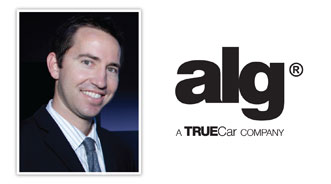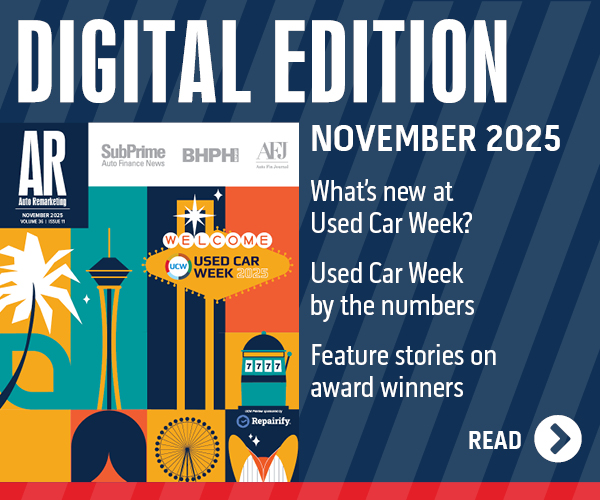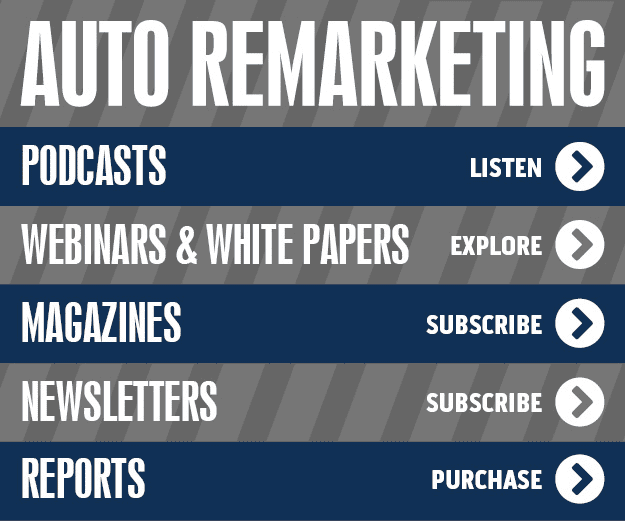ALG: Ford, Hyundai Post Long-Term Improvement in Perceived Quality

By subscribing, you agree to receive communications from Auto Remarketing and our partners in accordance with our Privacy Policy. We may share your information with select partners and sponsors who may contact you about their products and services. You may unsubscribe at any time.
SANTA BARBARA, Calif. –
ALG discovered Ford and Hyundai generated the highest level of improvement in perception of quality among all automakers during the last five years.
According to ALG’s 2012 Perceived Quality Study released today, Ford’s perception of quality has improved nearly 37 percent since 2008 while Hyundai’s perception of quality has increased by 25 percent during that time period.
The Blue Oval’s improvement allowed the OEM to come in fourth in the study rankings as Hyundai settled above the mainstream average.
ALG found Honda ranked highest among mainstream brands with a perceived quality score of 81.3. The firm noticed Toyota came in closely behind at No. 2 as the OEM’s perception of quality continues to recover from its drop in 2010.
The study also revealed Toyota showed the largest year-over-year perception improvement of any brand.
Analysts contend Honda and Toyota continue to be the perception of quality standard bearers among mainstream brands with Subaru ranking third.
Subscribe to Auto Remarketing to stay informed and stay ahead.
By subscribing, you agree to receive communications from Auto Remarketing and our partners in accordance with our Privacy Policy. We may share your information with select partners and sponsors who may contact you about their products and services. You may unsubscribe at any time.
Among luxury brands, Lexus is highest ranked for the second consecutive year with a perceived quality score of 85.4. Three European brands — Mercedes-Benz, BMW and Porsche — rounded out the top four.
“Changing the perception of quality is a long-term proposition,” said Eric Lyman, ALG’s vice president of residual value solutions.
“Consumers recognize the product improvements made by Ford and Hyundai. Honda and Toyota are still widely recognized as being the quality leaders, but as more consumers increasingly consider brands like Subaru, Ford and Hyundai, that perception gap erodes,” Lyman continued.
Other brands showing significant year-over-year improvement included Fiat, Scion, Dodge and Kia.
“Kia and Dodge are great examples of perception improvement based on product and marketing,” Lyman emphasized.
“Both brands have launched exciting new product and impactful messaging. While they both face significant history to overcome, consumers are beginning to recognize their improvement,” he went on to say.
Perceived Quality Long-Term Trends
ALG explained that changing consumer perception has often been compared to turning an aircraft carrier.
“Despite being in an era where information is available on-demand, changing one’s perception continues to be a long-term proposition,” analysts acknowledged. “Since our inaugural report five years ago, 19 automotive brands have been measured in every report we’ve conducted. Of those brands, three have made meaningful perception of quality improvements relative to other mainstream brands among the consumers we surveyed.”
As mentioned previously, the biggest mover during that five-year period is Ford, which increased in perception by 18.9 index points and moved up from being below the mainstream average in 2008 to ranking in the top five in ALG’s spring measurement.
Analysts noted Hyundai has risen 12.5 index points and into the top 10 mainstream brands, ranking eighth in this spring’s measurement and is now better than the mainstream average.
While fellow Korean brand Kia remains well below the mainstream average, Kia’s improvement is nonetheless noteworthy, according to ALG.
“Of the 19 mainstream brands continuously measured, Kia ranked last in the inaugural survey,” analysts recapped. “Though the brand continues to have a perception challenge among consumers, they posted a noteworthy 12.7-point improvement.
What is driving these gains in perception improvement?
“Certainly one consistent thread among the three brands is improved product,” ALG responded.
“With Ford, the gain has been linked to the brand’s renewed attention on cars — after years of attention to its high-margin trucks — with the launch of the new Taurus, Focus, and Fiesta, and significant refreshes to the Fusion and Mustang,” the firm continued. “With a new global Focus and completely redesigned Fusion cited for its design and purported fuel economy, we wouldn’t be surprised to see that trend continue.”
More Mainstream Brand Analysis
After elaborating about Ford, Hyundai and Kia, ALG touched on Toyota’s rebound is continuing while Chrysler’s badges appear to be gaining steam.
While Honda continues to lead the way among mainstream brands, ranking highest since the spring 2010 survey, ALG pointed out Toyota stays on a corrected course from its setbacks in 2010.
The firm said overall rankings remain similar to the previous measurement, particularly for highly rated brands.
“Of the 10 top-rated brands there was only one change in rankings with Ford moving up one spot,” analysts determined.
“That said, Honda and Toyota still represent the top tier of quality perception with the second tier consisting of Subaru, Ford, Nissan and Volkswagen,” they continued.
“For Toyota, a 30-year history of good will has helped close the gap after declining by 16 points relative to Honda. Our spring report shows the gap reaching just 1.2 points,” analysts went on to say
On a year-over-year basis, ALG found Toyota is the biggest gainer, rising by 6.4 points, followed by Fiat climbing by 6.1 points.
Also demonstrating improved quality perception over last year are Chrysler Group brands — Dodge and Chrysler.
“While Chrysler Group brands remain among the lowest rated in our report, they show upward momentum,” analysts stressed.
After showing gains last spring, ALG highlighted that General Motors’ Chevrolet, GMC and Buick brands all show a downturn in their quality perception year over year.
“This is a troubling trend, suggesting that GM’s new generation of products, which has refreshed much of its lineup, has not sustained the upward momentum it had been building,” analysts conceded.
Lexus Remains on Top of Static Luxury Group
Moving on with this report, ALG determined Lexus held the top spot in the luxury sector for the second year in a row after sliding a bit — along with Toyota — during 2010.
“Similar to the mainstream sector, the highest-rated luxury brands all maintained their relative positions,” analysts explained. “The only change in rank was Land Rover, which rose above Jaguar for the first time since the survey has been conducted.
“However, unlike the mainstream category, where Japanese brands hold four of the top five spots, German brands Mercedes-Benz, BMW and Porsche rank behind Lexus as the dominant brands in terms of quality perception,” analysts continued.
ALG emphasized that luxury rankings have remained fairly consistent when comparing longer-term trends.
“Since the inception of the survey, Porsche is the only brand that has gained significantly in the survey, improving three rank positions and moving into the top 5 of luxury brands on the strength of its Panamera introduction and Cayenne redesign,” analysts explained. “During that same time period, Volvo has declined two rank positions.
“The perception of where these luxury brands stand relative to one another seems to be more solidly cemented in the minds of automotive shoppers, in comparison with the mainstream brands, making differentiation that much more critical among luxury brands,” they went on to say.
Brands Facing an Uphill Battle
In another segment of its analysis, ALG delved into the topic of which brands are encountering the most challenges in improving their perceived quality.
“Familiarity is an important component of brand image — manufacturers with high awareness are also more likely to be reviewed favorably on quality,” ALG emphasized. “Causation works both ways, with quality influencing awareness, as well as awareness impacting the perceived quality.”
When asked to rank each brand’s quality, survey respondents were also given the option of responding that they were unfamiliar with the brand.
“A plot of quality versus familiarity reveals a positive correlation between quality and awareness,” ALG stated. “Infiniti is the only brand with above average quality and below average familiarity, showing how rare it is for a high-quality brand to go unnoticed.”
On the other end of the spectrum, ALG determined there are many brands with high awareness but low perceived quality. The firm said this contingent contains a high percentage of domestic manufacturers with Dodge, Chrysler, Chevrolet, Buick, Jeep and GMC all in this space.
“Hyundai is the only foreign brand with above average recognition that scores below average on quality — though it has been steadily gaining, and relative to other mainstream brands it is has above average quality,” analysts explained.
“Kia is adjacent to this quadrant, illustrating that the younger Korean brand could very well follow the path of Hyundai, which has been building its brand in the U.S. for over 25 years,” they continued. “Kia started sales nearly a decade later, but with its recent slate of new products, is already close to the industry average in familiarity.
“Japanese brands like Mitsubishi and Suzuki have severely curtailed their product and marketing efforts in the U.S., and have therefore dropped off the radar of many buyers, young and old,” ALG also noted. “Rebuilding their images will be a difficult task, however that lack of familiarity may be helpful by introducing competitive product and supporting that product with targeted messaging.”
ALG mentioned one other conclusion from this portion of its report findings.
“This analysis also suggests that for many domestic manufacturers, gains from additional marketing aimed at building awareness may be limited though the potential for marketing improved products is immense,” analysts began.
“However, for brands with below average familiarity, such as Fiat and smart, there are likely some gains to quality perception that can be made increasing brand awareness,” they continued. “Fiat had some lingering quality concerns from its last U.S. foray, which ended in the mid-1980s. But the brand has a big opportunity to raise its profile with a new generation of drivers, some of whom have been drawn to the diminutive Fiat 500.
“Interestingly, because of its history and aggressive marketing campaign, Fiat still has higher overall awareness here than does Mini, which returned to the U.S. 10 years ago,” analysts went on to say. “Fiat’s Alfa Romeo sporty brand, which plans to return in 2013, may be in a better position to rebuild its reputation, due to its lower familiarity, but higher quality perception.”
Brands Vulnerable to Defection
ALG believes that it’s not surprising that on average owners are significantly more likely to rate their own brands higher when it comes to perception of quality.
On average, analysts found there was a 16.9-point gap between the quality perception of owners and non-owners.
“The difference between owner and non-owner perception can give clues to the future direction of brand perception, as owners may have more intimate knowledge of a make’s quality,” ALG suggested.
For highly rated brands such as Lexus, Mercedes-Benz and Honda, the firm indicated the gap in perception between owners and non-owners is small as they have favorable views of quality. Also of note is the extreme satisfaction of Subaru owners.
With a perceived quality score of 93.5, ALG noticed Subaru owners rate their vehicles as higher quality than owners of any other brand.
“And while Subaru’s familiarity among buyers is right about the segment average, only a small fraction of drivers have actually owned one,” analysts pointed out. “If its volume were higher, Subaru would have a larger set of brand advocates to rave about its quality to potential buyers, the way the Honda and Toyota do.”
Meanwhile, ALG said the two Korean manufacturers, Hyundai and Kia, have the largest gap in perception between owners and non-owners.
“This is consistent with general industry consensus that their quality has improved substantially, while public perception has lagged,” analysts explained. “With an owner perceived quality score of 91.1 Hyundai is near the top of all brands, while their non-owner score ranks roughly in the middle.
“Similarly, when reviewed by owners Kia falls in the middle of all brand rankings, contrasting their score near the bottom when all surveys are taken into account,” they added.
For those brands in the lower left-hand quadrant, owners and non-owners are also somewhat in agreement, but not necessarily in a good way. Brands in this area show owner perception lower than average. This quadrant is dominated by domestic brands, where regardless of improvements of product, there is a legacy of poor perception to overcome.
Also noteworthy, ALG mentioned the perception of another import brand — Nissan — has owners who report a below average perception of quality while non-owners have better-than-average perception.
“Nissan likely benefits from its association with other high-quality Japanese brands, however owners seem to indicate that Nissan has not lived up to those quality expectations,” analysts surmised.
“Obviously this attitude among owners has tremendous implications when it comes to loyalty,” they projected. “Brands like these are in danger of alienating owners, losing brand advocates and are highly vulnerable to defection of buyers where quality is an important factor in their decision making process.”
Report Background
Now in its fifth year, ALG’s Perceived Quality Study is a semi-annual consumer survey measuring the perceived quality of automotive brands. PQS reports the opinions of more than 3,000 U.S. consumers in order to gauge perceptions of mainstream and luxury brands.
“PQS is one of the metrics ALG examines in calculating our industry benchmark residual values, helping companies and consumers understand the future value of their vehicles,” analysts concluded.
ALG Perceived Quality Score: Mainstream Brands
—Honda: 81.3
—Toyota: 80.1
—Subaru: 71.1
—Ford: 70.5
—Nissan: 70.2
—Volkswagen: 69.6
—Mazda: 64.0
—Hyundai: 62.3
—Mainstream Average: 59.1
—Mini: 58.1
—Buick: 57.8
—Scion: 56.9
—Ram Trucks: 56.7
—Mitsubishi: 56.7
—Chevrolet: 55.4
—GMC: 54.8
—Jeep: 52.6
—Kia: 52.4
—Chrysler: 49.1
—Dodge: 48.8
—Suzuki: 48.1
—Fiat: 44.5
—smart: 39.6
ALG Perceived Quality Score: Luxury Brands
—Lexus: 85.4
—Mercedes-Benz: 82.9
—BMW: 81.5
—Porsche: 80.0
—Acura: 78.2
—Infiniti: 77.6
—Volvo: 75.7
—Audi: 74.2
—Luxury Average: 71.2
—Cadillac: 67.2
—Lincoln: 67.0
—Land Rover: 60.4
—Jaguar: 58.8
—Alfa Romeo: 56.2


